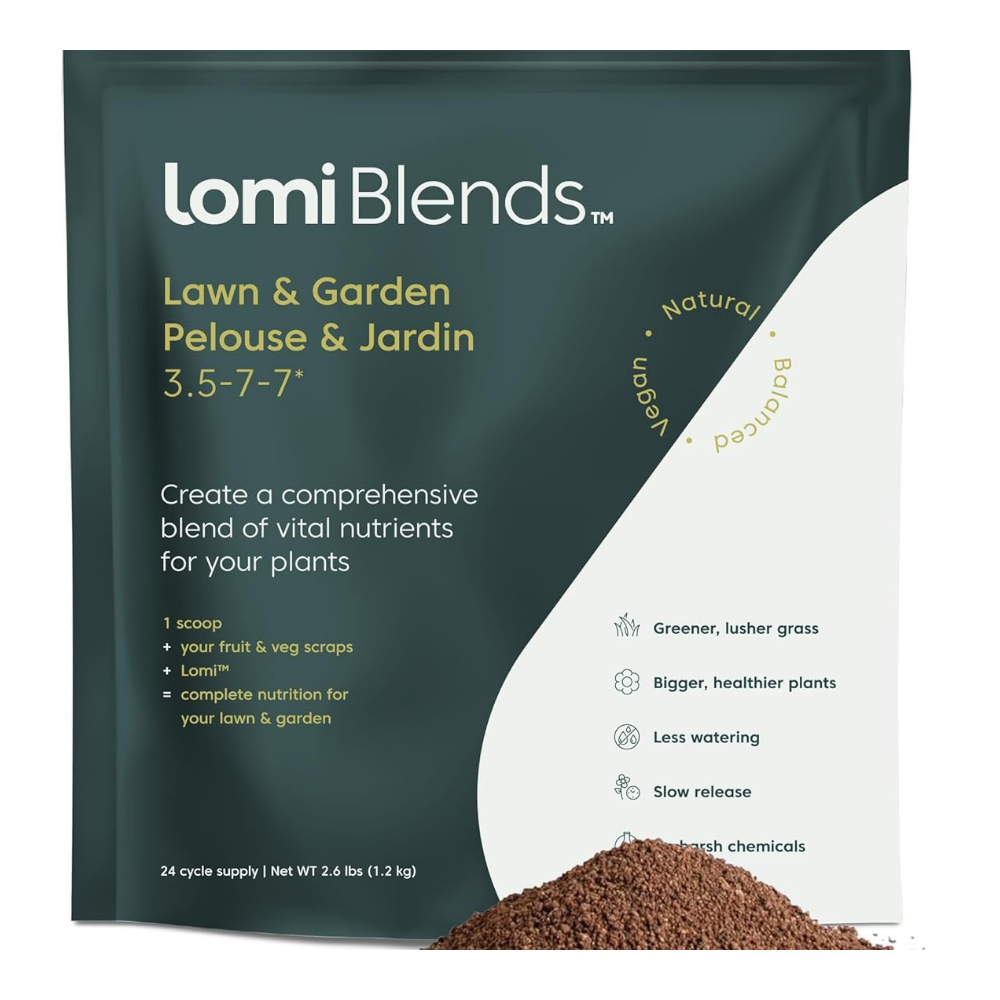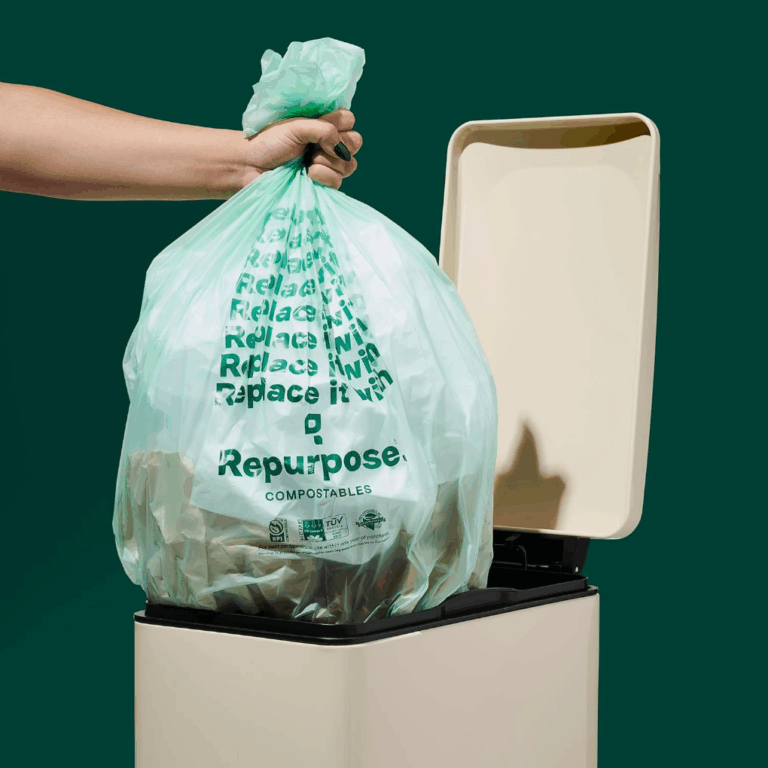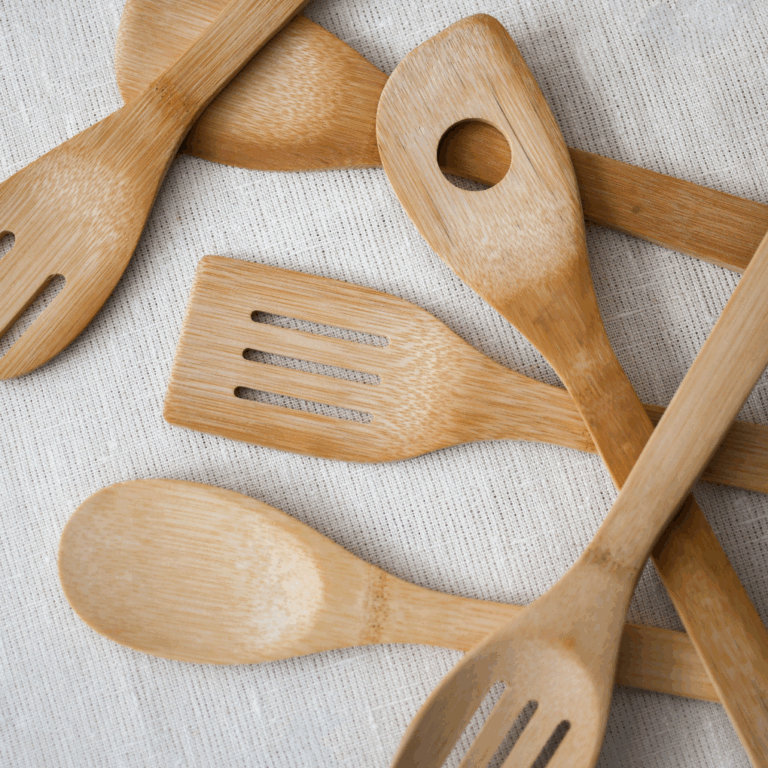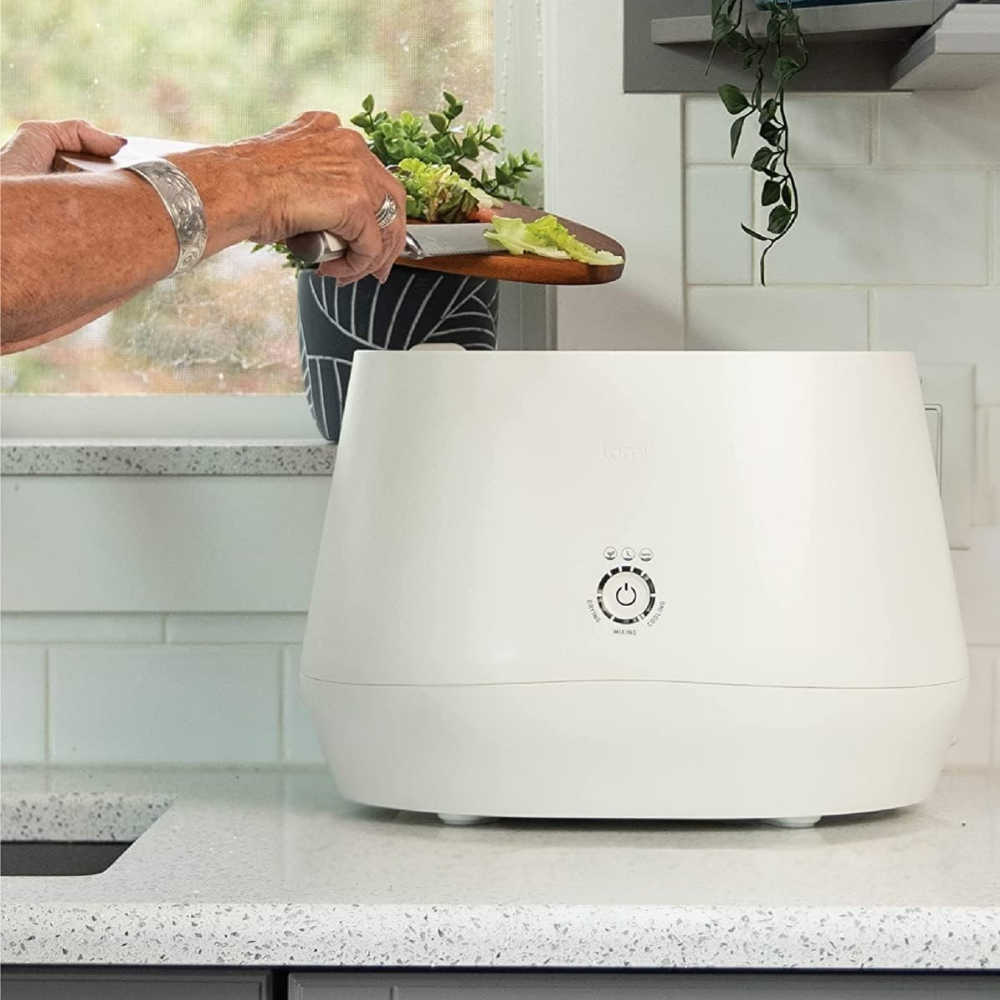
Food waste is one of the most overlooked environmental challenges of our time. In the United States alone, approximately 40% of food ends up in landfills, where it generates methane, a greenhouse gas 25 times more potent than carbon dioxide.1 For eco-conscious households seeking practical solutions, traditional barriers to composting have been significant: the need for outdoor space, unpleasant odors, pest attraction, and the lengthy decomposition process.
Enter the Lomi composter, a revolutionary countertop appliance that transforms your kitchen scraps into nutrient-rich soil in just hours, not months. This electric composter addresses the pain points of traditional composting while fitting seamlessly into modern lifestyles, making sustainable living accessible to apartment dwellers, busy families, and anyone passionate about reducing their environmental footprint.
This comprehensive guide will explore everything you need to know about the Lomi composter, from its innovative features to real user experiences, helping you decide if this game-changing appliance is worth incorporating into your sustainable kitchen.
Related Article: Why is Composting Important? Benefits for You & Environment
What is the Lomi Composter?
The Lomi composter is a countertop electric composting appliance designed to break down organic waste using heat, moisture, and oxygen, mimicking the natural decomposition process in an accelerated, controlled environment. Unlike traditional composting bins that require outdoor space and months of patience, Lomi transforms food scraps into usable soil amendment in 4-20 hours, depending on the selected mode.
Developed by Pela, a company known for sustainable phone cases and eco-friendly products, the Lomi composter represents a significant step forward in making composting accessible to urban dwellers and anyone seeking a more convenient, odor-free composting solution.
How it Fits into Modern Kitchen Life
The Lomi composter is specifically designed for contemporary lifestyles. Its sleek, modern aesthetic complements any kitchen décor, while its compact footprint (roughly the size of a large bread maker) ensures it won’t dominate your counter space. The appliance operates quietly enough for overnight use and features intuitive controls that make composting as simple as pressing a button.
For families juggling busy schedules, the Lomi eliminates the daily ritual of taking out smelly food waste, reduces the frequency of garbage collection, and provides immediate gratification by producing usable compost for houseplants or gardens.
Related Article: Composting 101: A Beginner’s Guide to Creating Black Gold
Key Features of the Lomi Composter
Advanced Odor Control System
One of the most impressive features of the Lomi composter is its sophisticated odor management system. The device uses activated charcoal filters that effectively neutralize unpleasant smells during the composting process. Users consistently report that even when processing pungent food waste, such as onions or fish scraps, the Lomi produces minimal odor—a stark contrast to traditional compost bins that can overwhelm kitchen spaces.
The charcoal filters are replaceable and typically last 3-6 months, depending on usage frequency. This engineered approach to odor control makes the Lomi suitable for open-concept kitchens and small living spaces where traditional composting would be impractical.
Quiet Operation and User-Friendly Design
The Lomi operates at approximately 60 decibels, similar to a dishwasher or quiet conversation, making it unobtrusive enough to run overnight or during daily activities. The single-button interface eliminates complexity, allowing users to select their preferred composting mode and let the machine handle the rest.
The intuitive design extends to the removable inner bucket, which features a non-stick coating for easy cleaning and a comfortable handle for effortless waste addition and removal of compost.
Multiple Composting Modes
The Lomi composter offers three distinct modes to accommodate different needs and waste types:
Eco Express Mode (4-6 hours): The fastest option, perfect for daily food scraps and producing soil amendment for houseplants. This mode utilizes higher temperatures to break down organic matter rapidly.
Grow Mode (16-20 hours): A longer, lower-temperature cycle that creates nutrient-rich compost ideal for gardens and outdoor plants. This mode more closely mimics natural decomposition processes.
Lomi Approved Mode (4-6 hours): Specifically designed for Lomi-approved bioplastic packaging and products, this mode can handle certain certified compostable materials that wouldn’t break down in traditional home composting.
Capacity and Size Specifications
The Lomi composter can process up to 3 liters of food waste per cycle, which translates to approximately 2 to 3 days’ worth of scraps for an average household. The compact design measures roughly 13″ x 16″ x 12″, making it suitable for most kitchen counters while processing a meaningful amount of organic waste.
The device weighs approximately 20 pounds, making it portable enough to move if needed while remaining stable during operation.
Durability and Materials
Constructed with high-quality, food-safe materials, the Lomi composter is built to withstand regular use. The outer housing is made from durable plastic, while the inner bucket features a non-stick coating that resists staining and makes cleaning straightforward.
The heating elements and internal components are designed for longevity, with many users reporting consistent performance after months of regular use.
How to Use a Lomi Composter?
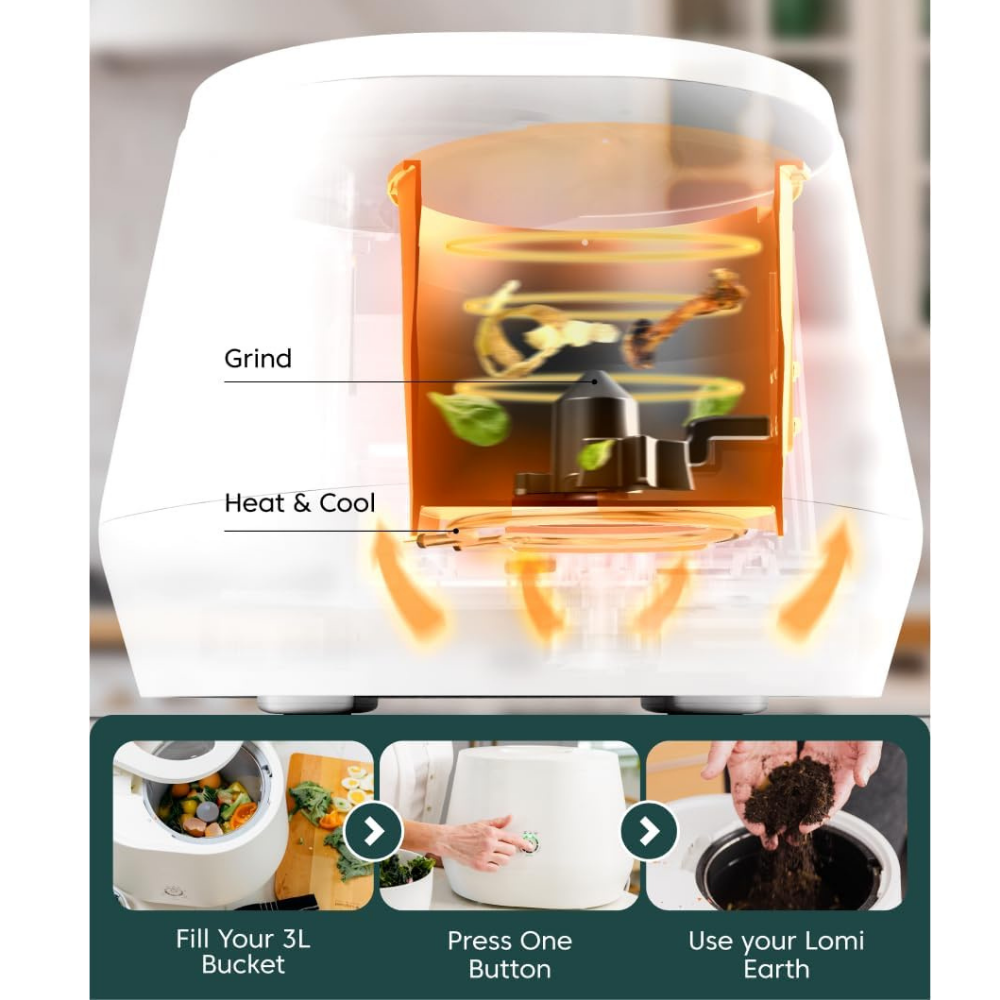
Step-by-Step Process
Using the Lomi composter is remarkably straightforward:
- Add organic waste to the removable inner bucket throughout the day or week
- Select your preferred mode using the single-button interface
- Close the lid and let the Lomi work its magic
- Remove finished compost when the cycle completes
The process combines heat, moisture control, and gentle agitation to efficiently break down organic matter. Internal sensors monitor temperature and moisture levels, automatically adjusting conditions to optimize the decomposition process.
What Can Be Composted
The Lomi composter handles a wide variety of organic waste, including:
- Fruit and vegetable scraps
- Coffee grounds and tea bags
- Eggshells
- Small bones (chicken, fish)
- Bread and grains
- Dairy products (in moderation)
- Lomi-approved bioplastic packaging
Items to avoid include large bones, excessive oils, and non-compostable materials like regular plastic packaging.
The End Product
After completing a cycle, the Lomi produces a dark, nutrient-rich material that can be used immediately as soil amendment for houseplants or mixed into garden soil. The output is significantly reduced in volume compared to the original waste, typically by 80-90%, and has a pleasant, earthy smell.
This compost-like material provides valuable nutrients and organic matter that plants love, though it’s technically classified as a soil amendment rather than fully mature compost.
Benefits of Using a Lomi Composter
Environmental Impact
The Lomi composter addresses food waste at its source, preventing organic material from entering landfills where it would generate methane emissions. By processing food scraps at home, users directly reduce their household’s contribution to greenhouse gas emissions while creating valuable soil amendments.
Each pound of food waste diverted from landfills through the Lomi represents a meaningful reduction in environmental impact, particularly when multiplied across thousands of households.
Lomi’s Collective Environmental Impact
The true power of the Lomi composter becomes evident when examining its collective impact across the growing community of users worldwide.
In 2024 alone, Lomi users processed more than 54,306,000 pounds of food scraps, preventing massive amounts of organic waste from entering landfills where it would decompose and release methane, a greenhouse gas 25 times more potent than carbon dioxide.
The environmental benefits are staggering: all the carbon emissions that would have been created by sending those food scraps to landfills were eliminated through at-home composting. This carbon reduction is equivalent to the work of more than 123,000 trees in removing CO2 from our atmosphere.
But the impact doesn’t stop at waste diversion. Those 54+ million pounds of food scraps were transformed into more than 10.86 million pounds of nutrient-rich Lomi Earth. When properly mixed with soil, this amount of compost created over 119.47 million pounds of natural fertilizer, enough to cover 840 football fields with an inch of homemade, organic soil amendment.2
This massive scale of impact demonstrates that individual actions, when multiplied across a committed community, create meaningful environmental change. Every Lomi user becomes part of this larger movement toward sustainable living and regenerative practices.
Convenience and Lifestyle Benefits
Beyond environmental benefits, the Lomi composter offers significant quality-of-life improvements:
- Reduced kitchen odors from eliminating rotting food waste
- Fewer pest problems without decomposing organic matter in garbage
- Less frequent garbage collection due to reduced waste volume
- Immediate gratification from producing usable compost
These practical benefits make sustainable living more accessible and enjoyable, removing common barriers to eco-friendly practices.
Garden and Plant Benefits
The nutrient-rich output from the Lomi composter provides excellent soil amendment for both indoor and outdoor plants. Users report improved plant health, better soil structure, and reduced need for commercial fertilizers when incorporating Lomi compost into their gardening routine.
The fine texture and balanced nutrient content make it particularly suitable for container gardening and caring for houseplants.
Lomi 1.3 – 3L, Electric Composter
$200-379

I’ve researched the Lomi composter extensively as part of my exploration of sustainable kitchen solutions, and it represents one of the most practical innovations in home composting technology. Pela, the company behind Lomi, was founded in 2011 with a mission to create a waste-free future, starting with their biodegradable phone cases before expanding into composting solutions.
The Lomi transforms food waste into nutrient-rich soil amendment in just 4-20 hours, using an innovative combination of heat, moisture, and oxygen. Its three composting modes accommodate different waste types and timing needs, while advanced odor control makes it suitable for any kitchen environment. The sleek design and quiet operation integrate seamlessly into modern lifestyles.
- Packaging: Their packaging is designed with zero waste in mind. They go beyond keeping food scraps out of landfills by also making sure the packaging doesn’t create more waste. It’s printed with vegetable-based inks and made from compostable, plant-derived materials, so when you’re done, it can be either recycled or composted.
- Certifications: B Corporation, Gold Standard
Lomi Models & Upgrades
Lomi 2 vs. Lomi 3: What’s New?
The Lomi 3 is the latest evolution of Pela’s smart composter, building on real-world feedback from Lomi 2 users. It introduces several meaningful upgrades that enhance performance, usability, and reliability:
- Faster, more efficient cycles
- Enhanced processing power enables the quicker breakdown of food scraps and more challenging compostables.
- Upgraded odor control
- A redesigned filtration system offers even better smell management—ideal for small kitchens or open-concept spaces.
- Improved durability
- Reinforced internal components increase longevity, especially for daily or high-volume use.
- Refined user interface
- More intuitive controls and more precise feedback make operation even more user-friendly.
Notable Improvements at a Glance
Recent updates across the Lomi line focus on refining the user experience:
- Quieter operation for less disruption in shared spaces
- More consistent compost output with better moisture and texture balance
- Expanded compatibility with a broader range of organic waste and Lomi-approved bioplastics
User Experiences & Testimonials
Positive Feedback
Users consistently praise the Lomi composter for several key attributes:
- Ease of use: The single-button operation and intuitive design receive widespread appreciation, with many users noting that composting has become an effortless part of their daily routine.
- Odor control: Even skeptical users are impressed by the effective odor management, with many reporting complete elimination of kitchen garbage smells.
- Waste reduction: Households typically experience dramatic reductions in garbage volume, with some reporting a 40-50% decrease in trash going to curb collection.
- Plant results: Gardeners and houseplant enthusiasts frequently share impressive before-and-after photos showing improved plant health after incorporating Lomi compost.
Common Questions and Concerns
Some users initially worry about electricity consumption, but Lomi’s energy usage is comparable to that of a dishwasher cycle. The convenience and environmental benefits generally outweigh energy costs for most households.
Occasional concerns about the texture of the final product are typically resolved when users understand that Lomi produces soil amendment rather than traditional compost and that mixing it with existing soil yields the best results.
Is the Lomi Composter Right for You?
While the Lomi composter offers a sleek and sustainable way to reduce food waste, it’s not a one-size-fits-all solution. Its greatest value shines in specific lifestyles and living situations, especially for those who want the benefits of composting without the mess, pests, or the need for outdoor space. If you’re wondering whether Lomi fits your home and habits, here’s who it’s best suited for:
Ideal Users
- Urban dwellers with no access to outdoor compost bins or municipal composting programs
- Busy families looking for a low-maintenance way to reduce food waste without the mess or smell of traditional composting
- Gardening enthusiasts who want a steady supply of nutrient-rich soil amendment for houseplants, raised beds, or container gardens
- Eco-conscious households committed to minimizing landfill contributions and embracing circular living
- Small-space residents (apartments, condos, tiny homes) where outdoor composting isn’t practical or permitted
Considerations Before Buying
- Noise Level: Lomi operates quietly for the most part, although you may hear some grinding and fan noise during specific cycles. Something to consider if your kitchen is part of an open living space or you live in a small apartment. Depending on the mode you choose (Eco, Grow, or Lomi Approved), the process can take anywhere from 3 to over 20 hours, so it’s not ideal if you’re hoping for a quick compost turnaround every day.
- Cycle Duration: While Lomi can handle most food scraps and select bioplastics, it struggles with large bones, greasy or oily waste, and bioplastics that aren’t Lomi-approved. This may involve adjusting how your household disposes of leftovers.
- Compost Output: As for the final product, it’s not certified compost; it works best as a soil booster rather than a potting mix or direct fertilizer. If you don’t garden or have plants at home, consider how you’ll use or share the output.
- Environmental Trade-offs: There’s also the ecological trade-off to consider: Lomi keeps food waste out of landfills, but it does require electricity. While the price tag ($299–$499) is a higher upfront cost, households with regular food waste may find it worthwhile over time, thanks to the convenience and reduced trash volume.
Pro Tips for New Lomi Owners
Getting Started Successfully
Start small: Begin with softer food scraps, such as fruit peels and vegetable trimmings, while you get familiar with the process. Gradually add more challenging items like eggshells and coffee grounds as you gain confidence.
Balance your mix: Aim for a combination of “greens” (nitrogen-rich items, such as fruit scraps) and “browns” (carbon-rich items, like coffee grounds and paper towels) for optimal results. A 50/50 mix works well.
Prep larger items: Chop or break down larger food scraps before adding them to the Lomi. Smaller pieces process more efficiently and create more uniform output.
Maximizing Performance
- Don’t overfill: Keep loads to about 80% capacity for best results. Overpacking can lead to uneven processing and longer cycle times.
- Use Grow Mode overnight: Take advantage of the longer Grow Mode cycle by running it overnight when the extended time won’t be inconvenient. The slower process often produces higher-quality compost.
- Layer strategically: Place harder items, such as bones and eggshells, at the bottom, with softer materials on top. This helps ensure even heat distribution during processing.
This Has Been About the Lomi Composter
The Lomi composter represents a significant breakthrough in making composting accessible to modern households. By addressing the traditional barriers of space, time, odor, and convenience, it transforms food waste management from a chore into a simple, rewarding daily practice.
While the initial investment requires consideration, the long-term benefits, reduced waste, improved plant health, and meaningful environmental impact,make the Lomi composter a valuable addition to eco-conscious kitchens. The combination of innovative technology, user-friendly design, and proven results positions it as a practical solution for anyone seeking to reduce their environmental footprint without sacrificing convenience.
As we collectively work toward more sustainable living practices, tools like the Lomi composter make it easier to choose environmental responsibility in our daily lives. Whether you’re a seasoned gardener or just beginning your sustainability journey, composting at home has never been more accessible or rewarding.
View Article Sources
- U.S. Environmental Protection Agency. (2023, October 16). Quantifying methane emissions from landfilled food waste. U.S. Environmental Protection Agency. Retrieved July 8, 2025, from https://www.epa.gov/land-research/quantifying-methane-emissions-landfilled-food-waste ↩︎
- Lomi. (n.d.). Sustainability. Retrieved July 8, 2025, from https://lomi.com/pages/sustainability ↩︎

